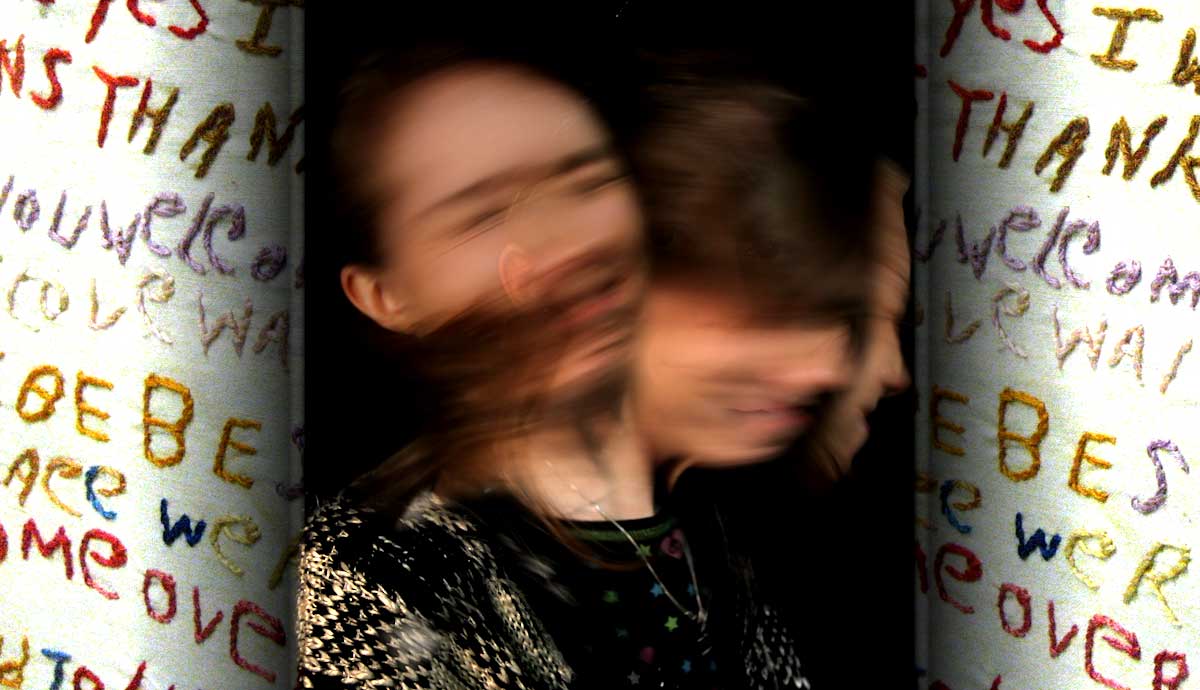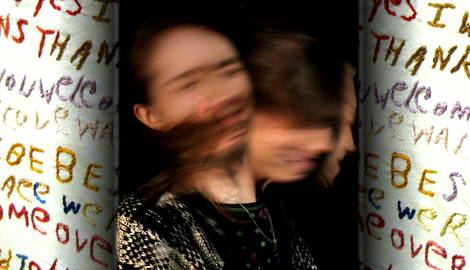
Contrary to the traditional way in which the mentally ill was seen as an Other to be decoded, objectively analysed and measured, the phenomenological framework which Laing lays out gives great importance to listening to the mentally ill. In this article, we will take the example of the schizoid type to showcase how R. D. Laing approached mental illness.
The understanding of the schizoid person starts with the introduction of the notion of ontological insecurity. Laing asserts that whilst some people have a grounded sense of self which persists through their experiences, others might feel disconnected from themselves, disconnected from their body and unable to experience temporal continuity. People with ontological insecurity have their sense of identity threatened by events most of us would call mundane. This is how psychosis develops.
R. D. Laing’s Categorization of Three Forms of Identity Loss

R. D. Laing distinguishes between three forms of identity loss. The first is Engulfment. Engulfment is the dread of being related to, seen, understood, exposed, even loved; in short, the feeling of being comprehended by another.
As a reaction to this fear of Engulfment the individual might isolate himself from others and himself, create distance or might purposefully obstruct and fend off any possibilities of being understood. This fact also explains the often-met resistance that psychiatrists receive from certain patients and the negative reaction the patients have when the psychiatrist or psychologist understands something about them which they didn’t mean to expose.
Another form is that of Implosion, where the patient seeks to desperately preserve their identity as nothingness. Every contact with reality, with a specific form of being is seen here as threatening to the emptiness they feel in themselves.
The last form is Petrification and depersonalization. This has to do with the fear of being turned into an “It” by the Other, into an object stripped of subjectivity, devoid of agency. Here the person requires constant confirmation that they are in fact a human subject capable of making choices and need their existence to be affirmed by others.
The Embodied and the Unembodied Self

The normal person goes through their life feeling their sense of selves to be embodied, grounded in their own bodies and connected to them in a way which establishes the possibility of communication. The unembodied person, on the other hand, does not go through life absorbed in their body but always seems to be detached from it, at a distance. These make up two radically different ways of experiencing humanity.
The body for the unembodied person is experienced as a mere object amongst other objects, and not as the foundation of his being in the world. The body isn’t the core of the self but of a false self which is divorced from the real self. Such a divorce contributes to the emergence of a feeling of unreality in the unembodied self where everything that happens around it doesn’t seem to be able to reach the core of the ‘true’ self. The unembodied self is hyper conscious. It takes note of the feelings of the body and his operations at a safe distance. This is where the split occurs, where the asymmetrical crack between the false and the true self first starts growing.
The Story of David

Such was the case of one of R. D. Laing’s patients named David. David spent his whole life at a distance from himself, never giving himself away, never expressing anything true, never exposing the core of his identity. His personality was carefully constructed, made up by different calculated impressions which served the purpose of concealing his true self, which was safe from any contact with reality, locked deep inside his brain.
These fragments take on a life of their own and become autonomous. The individual forms a microcosm of selves which nullify reality and conceal his core. David attended lectures at university wearing a cloak and carrying a crane. His tutor described his behaviour as entirely artificial and his speech was largely made up of quotations.
After his mother’s death as a child, David took on her role doing housework. At school too, as a kid, he was playing characters which he would switch up once they became unpopular with his schoolmates. He never let himself slip into his actions, never revealed it. It was always an act, a play that he was performing. If people didn’t like a character, that was fine. That’s not really him. He’s protected, at a distance from the consequences of his false selves.

In David’s case, the world is experienced as unreal, it is sublated. Everything that happens is a consequence of and happens to the false self which serves as the ambassador between the self and the world. Nothing touches the self directly. There’s no contact, no friction. As Laing puts it:
“If the individual delegates all transactions between himself and the other to a system within his being which is not ‘him’, then the world is experienced as unreal, and all that belongs to this system is felt to be false, futile and meaningless.”
The self retains its nonspecific character. It doesn’t commit to the world, doesn’t Interact directly with it. Everything is mediated and therefore not experienced as being alive. Everything is dead, unmoving and no impressions can be left in the self. Laing asserts that the disembodied individual dreads the Hegelian act. An act is something simple, determinate and it signifies the actualisation of what in the mind of the schizoid was pure endless potentiality. The human being directly ties himself to the world through his act, it becomes his act, the human becomes a concrete person.
“The act is ‘simple, determinate, universal…’. But his self wishes to be complex, indeterminate, and unique. The act is ‘what can be said of it’. But he must never be what can be said of him. He must remain always ungraspable, elusive, transcendent. The act is ‘such, and such… it is this, and the individual human being is what the act is. But he must at all costs never be what his act is.”
The schizoid dreads the possibility of being measured, mapped out and weighed in the world. The act is always passed to the false self.
The Story of Peter

Peter, a 25-year-old patient of Laing’s, complained about an unpleasant smell coming from him, a smell which he couldn’t get rid of despite showering several times a day. As a child, Laing tells us that Peter was not cared for by his parents. They weren’t particularly abusive. They took care of him materially, fed him and clothed him but they didn’t notice him. His birth didn’t cause any changes in their day-to-day life. They didn’t particularly want him, and Peter himself felt that they didn’t forgive him for being born.
Peter also felt that he wasn’t alive and that he had no value whatsoever. His physical presence in the world was hardly recognised. He felt guilt for simply being in the world. His mother was narcissistic and his father wasn’t attentive to him. He wasn’t seen. Peter split between his true self and a sham self which was compliant with his parents, teachers and the people around him, basing it on their idea of a regular, put together person.
He grew increasingly afraid that other people might penetrate his sham persona and expose him. Peter called the split into the sham self ‘uncoupling’ and through this he was able to adopt a role which concealed his self in any given situation around people. Of course, Peter didn’t actually smell. That was his fabrication of how uneasy he was with the idea of having a determinate body which occupied space, for which he felt guilt.
How Does R. D. Laing’s Divided Self Shift Into Psychosis?

After having illustrated the existential – phenomenological grounds in which the schizoid view grows, R. D. Laing wants to lay out how the passage to actual psychosis occurs.
If the withdrawal and isolation continues, the self loses all contact with reality: it is surrounded only by its split identities which mediate reality. These identities can take a life of their own and become autonomous if the self loses the central control over them.
Having an identity requires the existence of another by whom this identity is confirmed and in whom our identity is reflected, something which the schizoid avoids at all costs. The desire for omnipotence of the self leads to an impotence and the self becomes devoid of content, stripped out of any substance or direction. The self is anything in fantasy and nothing in reality. Reality is experienced as receding, fleeting. As soon as I reach out to touch it, it has already died. Everything I feel, touch and think is veiled with unreality the moment it senses my approach.
Laing recalls a few cases. One is the case of a young man who all of a sudden took a boat to the sea and was found hours later far from the land, refusing to be rescued, exclaiming he was going to find God. A man in his fifties who had never suffered from any psychosis who randomly – during a family picnic – undresses, enters in the river, starts throwing water on himself and says he was baptising himself for the sin of not loving his wife and children.
In both of these cases, a facade is kept until the implosion, the breaking point which exposes what was hidden behind the appearance of the normal.










